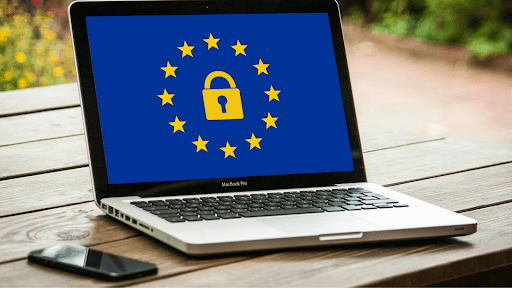
Recently, we have talked a lot about SEO trends and things your team should consider in order to rank in organic search results. As we move swiftly through the new year, it’s time to discuss considerations your business should make if it’s to stay competitive in 2020.
>Share this post<
by Irina Ciutaco
February 05, 2020
Recently, we have talked a lot about SEO trends and things your team should consider in order to rank in organic search results. As we move swiftly through the new year, it’s time to discuss considerations your business should make if it’s to stay competitive in 2020. We believe these 10 Digital Marketing Trends will play a large part in digital strategies over the next year, as updates and technology takeovers are imminent.
Is 2020 going to be the year of Social eCommerce, the Year of Messaging Apps or the Year of Interactive Content? These are just some of the questions that come to mind when we think about 2020. But what does hold for digital marketing trends and strategies?
Each year, the digital marketing theme stays the same; “It’s the Year of the Customer and the purpose is to improve reach, engagement and better serve your customers.”
So without further ado, let’s dive into 10 marketing trends we believe will be vital in the success of your marketing department this year.
Is 2020 going to be the year of Social eCommerce, the Year of Messaging Apps or the Year of Interactive Content? These are just some of the questions that come to mind when we think about 2020. But what does hold for digital marketing trends and strategies?
Each year, the digital marketing theme stays the same; “It’s the Year of the Customer and the purpose is to improve reach, engagement and better serve your customers.”
So without further ado, let’s dive into 10 marketing trends we believe will be vital in the success of your marketing department this year.
1. Private Messaging Apps
Since 2015, messaging apps have been growing and becoming the favourite method for customers to contact businesses. For example, 70% of people are choosing a Message Us button instead of a Call Us button when searching for customer support?79% of consumers say that they are more loyal to companies that are easy to connect with. When it comes to messaging apps, 69% of US consumers say that the ability to message a business is building confidence in the brand.
By implementing chatbots and private messaging systems, you will get the advantage of expanding efficiency, automation and availability. In 2020, Messaging Apps will remain at the forefront of communications between consumers and businesses, as well as an alternative channel to advertise on. Companies that make Private Messaging Apps a priority in their Customer Experience strategy will therefore gain and retain more satisfied customers.
2. Interactive Marketing
In 2020, personalised content will be a powerful asset, desired by both marketers and consumers. Did you know that 93% of marketers acknowledge that interactive content is engaging consumers in comparison to 70% for static content?Take, for example, Netflix’s recent movie, You V’s The Wild. Viewers make decisions with their remote and influence the storyline and conclusion of the movie. This method of engagement can also be applied to the retail sector and will result in consumer guided advertising. Marketers can then create suggestions based on the knowledge they have gathered and therefore interactive marketing will lead to smarter targeting.
3. Online Reputation Management
Nowadays, people read 10 online reviews before making a final purchase decision. Therefore, it’s no surprise that what your customers say about your brand is more powerful than what you say about yourself.In 2019, 17% of marketers dedicated approximately half of their budget to influencer marketing – so now is definitely the right time to invest in this aspect. Moreover, the Google algorithm is penalizing you for every bad review you receive and is rewarding your competitors when they receive positive feedback. Therefore, it is easy to see why reviews are the second most powerful factor in Google’s local rankings.
Another tool where you can promote your brand is on social media. A.K.A. The world’s largest focus group and contains a multitude of insights towards your brand.
4. Social SEO
Currently, SEO and social media go hand-in-hand. The same fundamentals are now applied to Social Media Optimization in the shape of hashtags, keywords and trending sentences. Social media is a great asset of new leads and revenue – changing social SEO into a smart choice in 2020.
The important question is how can social signals such as likes and shares directly impact your SEO rankings? If you post your optimised content on social media and you share it, you succeed in cross-promoting your content on both channels.
5. Personalized Marketing
We all know that personalization is not something new as nowadays 72% of consumers are engaging with personalized messages.
Following this trend, brands will have to develop data and be focused on technology.
Top companies have started to use data sources combined with execution channels – which allows for specific personalization, changing divided data sources with automation, artificial intelligence and fast decision making. To follow this path, it’s important to decide on a platform with an open API in order to grant this sort of integration.
The question in 2020 is… how do you do that?
The technology that supports personalization, CX and social CRM will develop and improve at a fast pace. This is absolutely necessary as consumer’s expectations are rising in a fast way.
6. Social E-commerce
It is no secret that social media tools such as Instagram are a great place to shop in 2020. In fact, 70% of shopping users are using Instagram to buy new items. What is new is that Snapchat and Pinterest are following the same path.The beginning of Instagram’s shopping posts dates from 2018 and it is estimated that 80% of young shoppers are making impulsive decisions online. Therefore, we can foresee a great potential for social eCommerce.
The possibility of shopping using Instagram is not limited to posts. Instagram Stories have fast become a new favourite format among users; which shows great potential as well.
Therefore, now is the best time to get on the flow and use Social tools to sell online.
7. Data Privacy
The execution of GDPR in 2018 shook businesses across the world. Companies were obliged to conform their systems and operations to GDPR guidelines – while the Cambridge Analytica case caused social panic in regards to personal data. This has since created an augmented nervousness among internet users.
However, Deloitte discovered that 79% of users surveyed would be ‘’willing to share their data if there was a clear benefit for them.’’ Another survey found that 80% of North Americans are happy to share information directly with a brand in order to receive more personalized marketing. However, only 17% were comfortable with their information being shared with third parties.
Therefore, in 2020, sensitive data needs to be protected and to ensure third party vendors do that as well.
8. Social Media Advertising
By 2020, paid social will be the third-largest advertising channel worldwide.Social media ad spending has been increasing its value for a long time and it finally surpassed print advertising spend.
It is estimated that in 2020, US advertisers will spend roughly $38 billion on social media adverts – an increase of more than 100% since 2016. Facebook’s advertising platform is available for small companies and its advanced targeting/localization abilities make it an engaging advertising tool.
To keep up with the competition, brands need to increase their ad budgets. A strong social media advertising strategy needs to be implemented to ensure online success.
Is SEO dead nowadays? No. However, it needs social ad spend’s support. The better an organic campaign performs, the more chances it has to become a strong candidate for a paid campaign.
9. Real-Time Marketing
In the digital world, instant reactions are vital. One-third of consumers expect an answer within 30 minutes after voicing a client service complaint via social media. It turns out that the Internet has become a live environment, a process that is reflected in gaming, live video and e-commerce. Therefore, it comes as no surprise that 80% of people would rather watch a brand’s live video than read their blog.Video game streaming has become increasingly popular over the last number of years. In Q2 2019, gamers dedicated 3.77 billion hours to watching others play online. From this, we can gather that content created by other consumers can massively influence potential customers. This phenomenon is called “user-generated content” or UGC.
10. Ephemeral Marketing
Back in 2013, Snapchat introduced ephemeral content, a trend that is characterised by posts or messages that disappear within one day. Today, Snapchat has 200 million users and ephemeral content has boosted in popularity. Today, we see instant stories on Facebook and Instagram, with word that Whatsapp is testing the feature as well.Having a deep effect on user engagement, ephemeral content has doubled the amount of time that people are spending on Instagram. Stories are a great way to push engagement towards engagement and user-generated content.
The best example to feature the potential of ephemeral marketing is Lacoste: their ads on Instagram Stories doubled the online ROI.
Conclusion:
2020 is bringing fresh and important possibilities and challenges for business opportunities.You only need to follow the digital trends and keep up with Kooomo latest blog posts.
More to explore
In the next few years, we are foreseeing an impressive increase for the global retail industry. While this can be beneficial for the global eCommerce industry, it also means that there will be more competition, as well.
European Data Protection rules were launched back in 2018, to protect the confidentiality of our personal data but even four years later, there is still a lack of understanding among companies and consumers about how to comply with the best practices. Big tech companies, like Google or Amazon, usually refer to the acronym GDPR, to explain the rules that verify the data, so it is not used inappropriately, but to add details to create confusion.



